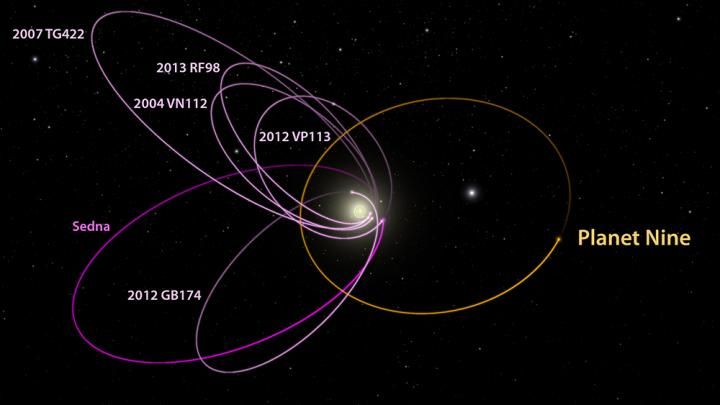Evidence Stacks Up for a Planet Beyond Pluto
A new paper provides the strongest evidence yet for a real Planet X
/https://tf-cmsv2-smithsonianmag-media.s3.amazonaws.com/filer/3d/e9/3de96f52-ebee-470d-b1f1-569247b4d963/107124_web.jpg)
Since Pluto was reclassified in 2006, our planetary family has had eight official members. But tantalizing new evidence suggests that a ninth world, ten times the mass of Earth, might linger at the extreme, cold edges of the solar system.
Astronomers Mike Brown and Konstantin Batygin, of the California Institute of Technology, think they've found evidence of this long-sought Planet X in the odd, slanted orbits of several chunks of rock and ice in the Kuiper belt. The duo formally refer to this new world as Planet Nine and informally as "Phattie," reports Alexandra Witze for Nature.
The investigation began in 2014 after the announcement of the discovery of some of the farthest-flung Kuiper belt objects. These distant bodies oddly move in squashed, oval-shaped orbits out of the plane of the solar system—a movement that researchers said might indicate the presence of a huge body, reports Witze.
So Brown and Batygin set out to disprove the wild notion.
But all the odd orbits lined up with each other, strongly suggesting the presence of a larger body, reports Nadia Drake for National Geographic. Tweaking the size and orbit of this larger body, their calculations showed that the odd orbits could be explained by the presence of a massive world that follows an egg-shaped path around the sun every 10,000 to 20,000 years, Brown and Batygin report in The Astronomical Journal.

"We sort of stopped laughing at our own calculations at that point," Batygin tells Drake. The gravity of this large planet must be "shepherding" the objects into their titled orbits, writes Witze.
The search for new planets on the fringes of the solar system has a long history, beginning over a century ago with Percival Lowell—who identified wobbles in the orbits of Neptune and Uranus that he believed to indicate a so-called Planet X, writes Jesse Emspak for Smithsonian.com. Though these particular wobbles turned out to be inaccurate measurements, many more scientists have searched.
While this latest report is not ironclad, it is the strongest yet claim for Planet X, writes Eric Hand for Science.
Based on the pair’s calculations, without a ninth planet, there is only a 0.007% chance, or one in 15,000, that the way the six Kuiper belt objects cluster could be a coincidence, Hand reports.
Even so, no one has actually detected Planet Nine itself—just the intriguing orbits. The planet would be far too distant from the Sun to reflect much light and near impossible to spot with most telescopes.
The calculations could also give false certainty. “I worry that the finding of a single new object that is not in the group [of the six Kuiper belt objects] would destroy the whole edifice,” says Dave Jewitt, a planetary scientist at UC Los Angeles, Hand reports. "It’s a game of sticks with only six sticks."
Even so, astronomers are still looking. "If there’s going to be another planet in the solar system, I think this is it," Greg Laughlin of the University of California, Santa Cruz, tells National Geographic. "It would be quite extraordinary if we had one. Fingers crossed. It would be amazing."